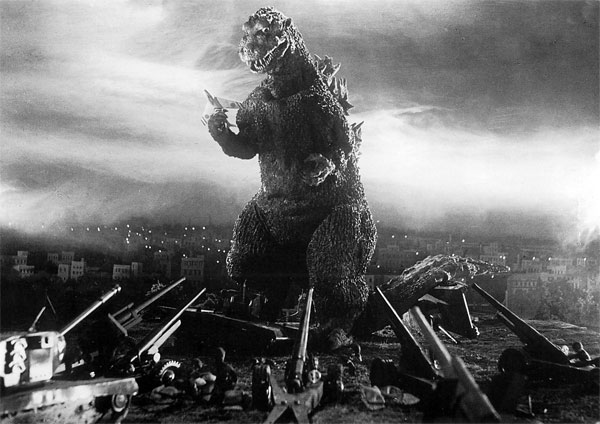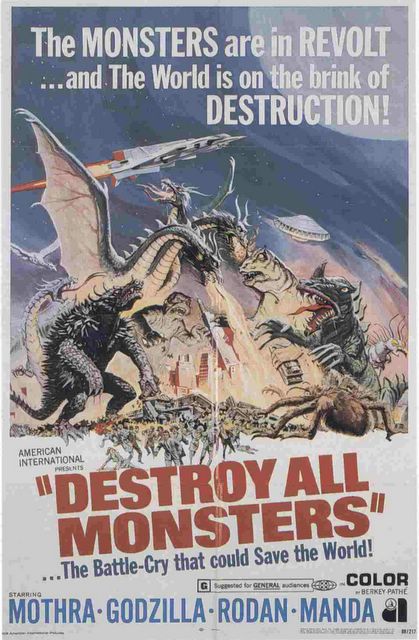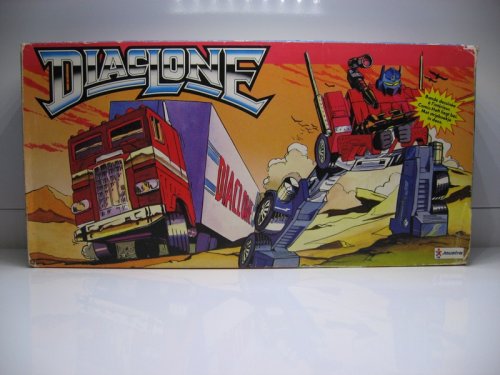Guillermo del Toro’s long awaited sci/fi epic, Pacific Rim, is soon upon us, and to prepare, we should take a look at the inspirations beneath it that run decades deep. For those heathens unaware, Pacific Rim can be swiftly described as Giant Robots Vs. Giant Monsters. Essentially, del Toro, having named the alien enemies in his film “Kaiju” is following the classic elements of Kaiju vs. Kikaiju, the two legendary boughs of Japanese action fantasy.

The roots inevitably lead us to Nippon in the post-war 1950s. Kaiju (literally “strange beasts”), best represented by the mighty Gojira (Godzilla) first spawned in 1954 from the Toho studios and former Kurosawa assistant Ishiro Honda, who was inspired by the American monster film from Ray Harryhausen, The Beast From 20,000 Fathoms (1953), in which a reawakened Rhedosaurus from the Arctic wrecks havoc. Gojira would become successful enough in Japan to launch the entire Kaiju genre, and with the re-edited American version, it would become an international sensation. Many strange beasts followed – Mothra, Rodan, Ghidorah and Gamera. From the very first Godzilla sequel, we find him locked in mortal combat with Anguirus, and after that the battle template was locked in as the formula for success. Eventually, it would culminate into the royal rumble of Destroy All Monsters (1968).

The American influence would continue to cross-pollinate. Honda shared Harryhausen’s admiration for the FX of Willis O’Brein. As a new humanoid Kaiju emerged, the Kaijin, Godzilla soon found himself faced against the greatest American Kaijin of all time – Kingu Kongu! The resulting King Kong Vs. Godzilla (1962) would become the most successful Godzilla film in Japan, even though it’s edited in such a way as to leave the “winner” ambiguous. Meanwhile, Harryhausen had modified his “Beast” into a more Zilla-esque Ymir for 20 Million Miles To Earth (1957), and other Western Kaiju, like Gorgo (1961), would become cult classics. Honda would continue making American-inspired Kaijin, such as “Furankenshuntain” who would conquer the world and war with Gargantuas. But Godzilla would become, by far, the most famous Daikaiju of them all (King of the Monsters, if you will), and remains iconic today. Despite certain efforts that will remain nameless, it’s still a valuable property, and Gareth Edwards (Monsters, naturally) is finishing the latest theatrical version, releasing in May 2014.

Just as the Kaiju genre was flowering throughout the 1960s, there was another slowly evolving creature lurking behind it – the Kikaiju (“mechanical beasts”) or “Super Robot”. The first Giant Robot was also a creation of Toho/Honda, from 1957’s The Mysterians. The Robot, Moguera (“Mole”) was a weapon of the alien race, the Mysterians, used to crush man and steal his women.
Moguera wasn’t quite the first Giant Robot to premiere in Japanese culture, as the Mitsuteru Yokoyama manga Tetsujin 28-go had seen its first publication the year prior. When the manga received its anime debut in 1963 (under the name Gigantor in America), it became the first of the Giant Robot anime, and the grandfather of the Mecha Anime.

Yokoyama also created the honestly named manga Giant Robo in 1967, which was immediately adapted into a live action TV show, shown in America under the name Johnny Sokko And His Flying Robot. It was also edited into a 90 minute movie called Voyage Into Space in 1970. By this time however, Ultraman had become a phenomenon itself, and the number of Giant Robot anime and tokusatsu (live action FX genre) started coming fast and furious.
As we approach the golden age of mecha anime, there are a couple key pioneers to consider. The first can roughly be summed up under the umbrella of the American set of mecha toys, Shogun Warriors, and the American TV show Force Five which bundled a number of the same mecha anime into a single show. Probably the best example of these would be Mazinger Z (aired as Tranzor Z in America) created by manga legend Go Nagai. There are so many offshoots of the Mazinger line that it gets very difficult to keep up with them. The main robots would be Great Mazinger, Grendizer, Gaiking, Raydeen and Dangard Ace. Several of the toys could be combined to form Combattra (who also had an anime). Others, like Golion, would see its anime making up parts of the American Voltron, which was actually an edit of two different mecha animes. Other early American exposure would come through Gatchaman (as Battle of the Planets and G-Force) and Tosho Daimos (as Starbirds). Variants of the Mazinger line continue to be produced today across nearly all media platforms. (And to tie it all back together, Mattel also sold Godzilla and Rodan toys with the Shogun Warriors, meaning that for some of us of a certain age, Pacific Rim is the realization of some very epic toy battles.)

http://youtu.be/NHoS8aSasXU
http://youtu.be/WsGYBkFhD4o
The next umbrella to tackle would be the family of variants in the Gundam series. Premiering in 1979 as Mobile Suit Gundam, it would go on to spawn dozens of spin-offs. The show introduced the new mecha genre of “Real Robot” which emphasized real science and technology over the more fantastical super powers of the previous giant robot mecha. Creator Yoshiyuki Tomino is one of the most respected anime filmmakers for this innovation into more realistic and detailed tech and more mature and complex storylines and characters.
Yet another family, and rather more complicated this time, would be those surrounding the Macross saga, including the American Robotech, which itself was actually assembled from the first Macross anime, The Super Dimension Fortress Macross, as well as Super Dimension Cavalry Southern Cross (not story-related to Macross) and Genesis Climber MOSPEADA. If that’s clear, then you’re ready to sort out the dozens of subsequent series, movies and video games. Creator Shoji Kawamori also worked for toymaker Takara on designs for the seminal toys (Microman/Diaclone) that would be sold as Transformers in America, as if his mecha-cred needed padding. I’m just pointing out that the use of transforming robots in Macross isn’t a coincidence.

By the time of the late 80s, the Real Robot mecha animes had become ubiquitous, not simply because of the rapidly multiplying spin-offs from Gundam and Macross, but also because a practical galaxy full of imitators ensued. On top of that, new remakes of the classic Super Robot characters began showing up as well. There are many great ones among them, but for expediency, I’ll focus on one anime in particular, for its specific resemblance to Pacific Rim. That would be 1995’s Neon Genesis Evangelion. Here we also have an alien invasion of Kaiju (or “Angels”), and we likewise have a resistence force of Kikaiju – giant mecha Evangelions controlled psychically by adolescents. By now, sci/fi anime had matured considerably, influenced by the more philosophical and metaphysical Nausicaa of the Valley of the Wind, Akira and Ghost in the Shell. NGE ambitiously dwells in psychological and religious archetypes, and for that, it tends to either awe or alienate. I seriously doubt Pacific Rim will be giving it much theosophical competition, but if anyone can deliver at least some surprising depth to a summer blockbuster, I’d wager it would be del Toro.
http://youtu.be/YRUp1KOTp8c





Comments